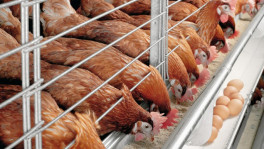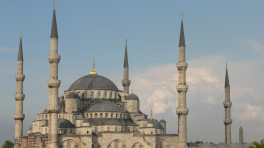Cotton production: Noticeable growth, yet still some way to go
Cotton production has been noticeably increasing in the country over the last ten fiscal years. In 2009-10, cotton lint production was 70,000 bales; now in 2019-20, the production has reached 1,77,887 bales

Cotton is an international industrial crop. It is also known as the white gold due to its relation with agriculture, industry, history, heritage, civilization and economy -- and is one of the basic needs of humans.
We require cotton all our lives - from birth to death. We can survive several days without food but it is not possible to lead a social life without clothes. Cotton is the most important plant fibre to make textile products.
Cotton is cultivated in 75 countries around the globe and Bangladesh stands at 40th position in cotton farming across the world. Four types of cotton are widely grown around the world: Gossypium hirsutum, Gossypium barbadense, Gossypium Arboretum and Gossypium herbaceum. Global production of Cotton is largely dominated by India, China, the USA, Pakistan, and Brazil.
One tonne of cotton on average provides almost one year-round employment for five persons. Cotton crop is perfectly suited for arid regions. The fibre occupies just 2.1 percent of the world's arable lands and produces materials to meet 27 percent of the world's textile needs.
In Bangladesh cotton occupies only 0.52 percent of land in two Kharif seasons and saves more than Tk 400 crore in foreign currency. While cotton fibre is used in textiles and clothing apparel, food products including edible oil are also obtained from cotton and its seed is used as animal feed.
The use of cotton has an old tradition and a history dating back almost 7,000 years. Clothes made of cotton are moisture absorbent, have a good drape and are known for their long durability.
Products range from highly absorbent bath towels and bed linens to basic clothes such as t-shirts, underwear or socks. Also, a broad range of technical textiles is made from this continuously popular fibre today.
The annual world production of cotton has decreased from 26.7 million tonnes in 2017-18 to 25.6 million tons in 2018-19, and this year the production is estimated to be 25.99 million tonnes.
Consequently, cotton is accounting for approximately 2.5 percent of the world's arable lands. For the season 2019-20, the top 10 cotton producers are India, China, United States, Brazil, Pakistan, Turkey, Uzbekistan, Mexico, Australia and Mali.
Africa as a continent delivers a total of 1.7 million tonnes of cotton to its customers, top 5 importing countries are China, Bangladesh, Vietnam, Turkey and Indonesia and top 5 exporting countries are USA, Brazil, Australia, India and Benin.
The first-ever World Cotton Day (WCD) was observed by the World Trade Organisation (WTO) in Geneva on October 7, 2019. The international day aims to celebrate the advantages of cotton, ranging from its qualities as a natural fibre to the benefits people obtain from its production, transformation, trade and consumption.
The World Cotton Day also highlights the challenges faced by the world's cotton economies, as cotton is significant for the least developed, developing and developed economies.
The day is observed in the aim of providing exposure and recognition to cotton and all its stakeholders in production, transformation and trade, engage donors, beneficiaries and strengthen development assistance. It seeks new collaborations with the investors and the private sector for cotton related industries and production in developing countries. Also, it promotes technological advances and opens the scope for further research and development.
The Cotton Development Board of Bangladesh wishes to celebrate "World Cotton Day 2020" officially. The board has decided to dedicate this day to the Father of The Nation Bangabandhu Sheikh Mujibur Rahman and will arrange a virtual webinar and workshop with national and international cotton experts, government and non-government officials, Ngos, cotton producer, spinners, retailers and also arrange a human chain, publish posters and involve the media.
The World Cotton Day 2020 will be observed to increase preference and demand for cotton and educate key audiences on its benefits and value, generate positive media coverage for cotton around the world, gain endorsements from government representatives of important cotton countries, engage WTO and UN and have World Cotton Day added to official UN calendar, recruit brands and retailers to promote cotton in their stores or websites, be self-funding and create events in multiple countries around the world for celebrating World Cotton Day.
Bangladesh is a developing country and textile industries are playing a vital role in the national economy, especially in the export sector to earn foreign currencies. Bangladesh is the world's second-biggest exporter of apparel after China. The garments manufacturing sector earned $34.13 billion in the fiscal year 2018-19 and export earning plummeted by 18.45 percent in FY 2019-2020 due to the coronavirus pandemic.
According to the Bangladesh Garment Manufacturers and Exporters Association (BGMEA), USDA report says, in 2020-21 FY raw cotton consumption is expected to rebound to 7.2 million bales, assuming that demand for garments will start to return to pre-Covid-19 levels. Raw cotton consumption levels in the current marketing year are estimated lower at 6.9 million bales due to reduced RMG consumption in the world market as an impact of the pandemic.
The Father of Nation Bangabandhu Sheikh Mujibur Rahman established the Cotton Development Board in 1972 for the expansion and improvement of cotton cultivation in the country after the Liberation War of 1971. Before that total raw cotton was imported from West Pakistan. In 1973 Father of the Nation brought backed 325 farmers from Pakistan and settled them in Ranisankail, Takurgaon with 796 acres of land for cotton cultivation. After 15 August 1975, this programme was closed and that land was redistributed to others as a result cotton production remain closed.
After 21 years, his daughter Sheikh Hasina came to power and again strengthen cotton production activities. As the current prime minister, Hasina already has given two big projects worth Tk 217.05 crore and a cotton building in the capital which is under construction.
The Agriculture Minister Dr Md Abdur Razzak MP, unveiled the foundation stone of the Cotton Development Board's building named "Tula Bhaban" on September 19. The agriculture secretary was present as the special guest while Executive Director of Cotton Development Board Dr Md Farid Uddin presided the ceremony.
The building will be constructed under Expansion of Cotton Cultivation Project (Phase-1), Cotton Development Board, Ministry of Agriculture. The project will be implemented by Resource Division, Dhaka of Public Works Department (PWD).
Textiles play a vital role in the national economy and are regarded as the lifeline of the Bangladeshi economy. But it did not occupy this place overnight. The textile industry of Bengal is very old. At that time, clothes were made by hand-operated weaving machines. With the growth of the Eastern civilisation, demand for finer yarns led to a search and cultivation for long-staple cotton fibres. "Muslin" is the heritage of the textile industry of Bangladesh which is the sample of fine fibre (Fashion Apparel, 2019).
From 1947 to 1971 most of the textile industries in East Pakistan were owned by West Pakistanis. Until the liberation of Bangladesh in 1971, the textile sector was primarily part of the process of import substitution industries. After the liberation, Bangladesh adopted export-oriented industrialisation (EOI) by focusing on the textile and clothing industry, particularly the RMG (Readymade Garment) sector. The apparel industry of Bangladesh started its journey in the early eighties with the first factory "Desh Garments". Now there are almost 4,621 garments factories in Bangladesh exporting apparel products around the globe (BGMEA, 2019).
During the last fiscal year, the textile sector contributed 11.16 percent to the GDP. According to BGMEA (2019) in 2018-19 fiscal year, RMG sector has contributed 84.21 percent, or $34.13 billion to the total export receipts; knitwear products fetched $16.88 billion, which is 11.19 percent higher than last fiscal year and woven items earned $17.24 billion, registering an 11.79 percent growth.
Majority of the RMGs are exported to the countries under the European Union (61.91 percent) followed by USA (17.97 percent), Canada (3.45 percent) and other countries (16.66 percent). During the last fiscal year the textile sector contributed 11.16 percent to the GDP of Bangladesh (BTMA, 2019). The textile sector is contributing to GDP not only by earning foreign currency but also by creating employment opportunities. Around 4.4 million people are directly involved in textile industries (Amin, 2018).
Cotton production is noticeably increasing in the country during the last ten fiscal years. In 2009-10, the cotton lint production was 70,000 bales; now in 2019-20, the production reached 177887 bales. Improvement in cotton production during the last decades is showing in the.
The cotton extension wing is providing service by CDB (HQ), four regional offices, thirteen zonal offices and 195 unit offices. On the other hand, the cotton research wing is working through 5 (five) research centres. CDB has shown promising successes from the establishment.
Both extension and research wings are working simultaneously for improving cotton cultivation and quality improvement of fibre. Some of the successes of CDB are: Cotton lint production increased up to 150 percent in last ten years; farmers are becoming interested to cultivate cotton; 20 varieties (19 HYVs and 1 Hybrid variety); 29 cotton cultivation technologies.
From the very beginning, the textile industry is facing lots of challenges. Many of those challenges have been overcome. But still, there are some challenges for the textile sector. Some of them are – Coronavirus, Climatic impact, lack of proper monitoring, the demand-supply gap of raw cotton, subsidy removal from the textile sector – GSP cancelled by the USA and lack of skilled manpower.
Though the production of cotton has increased at a noticeable rate, still there is a huge shortage compared to its demand. Cotton production in Bangladesh is frequently facing some problems such as –lack of positive attitude of planners, long duration, competitive land, competitive with other high-value crops, climate change, especially erratic rainfall, price volatility and insect pest.
To overcome the above challenges Bangladesh government has taken necessary steps such as strengthening the Cotton Development Board, increasing infrastructure development, creating an environment-friendly textile sector, ensuring wages in time for garments employees etc. Besides this, CDB will need an expansion of cotton-growing areas, reorganizing CDB, positive attitude of planners, provide price subsidy to cotton farmers, provide government loan as a special crop.
Dr Md Tasdiqur Rahman is a Deputy Director H.Q), Cotton Development Board, and General Secretary, KIB, Dhaka Metropolitan, Email: [email protected]


 Keep updated, follow The Business Standard's Google news channel
Keep updated, follow The Business Standard's Google news channel














